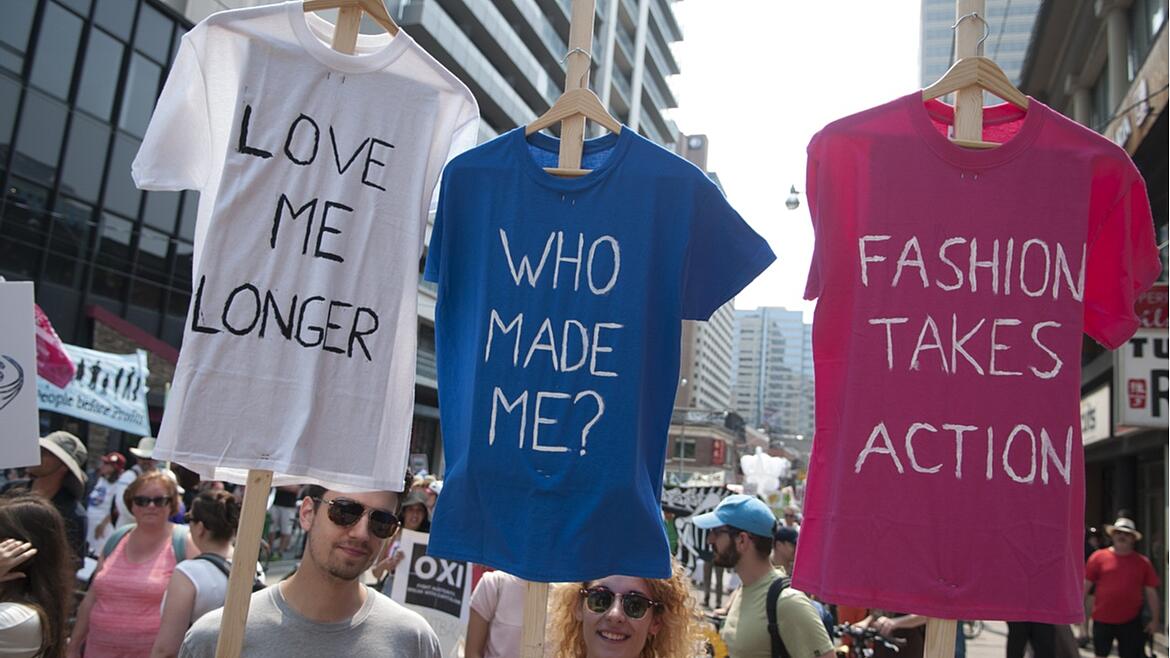While we often think about flying, eating meat, and using disposables as some of the biggest offenders of climate damage, the fashion industry is actually one of the biggest contributors. In fact, your fashion has a pretty substantial carbon footprint. You can learn more about the term ‘carbon footprint’ over at https://www.cooleffect.org/how-to-reduce-greenhouse-gases-a-guide-to-understanding-your-carbon-footprint if you are unsure as to its meaning. This will give you a greater understanding of its relevance to the fashion world and allow you to better understand the reasoning behind my following top tips for staying fashionable, but remaining sustainable.
Avoid fast fashion
Paying a proper price for your fashion items, be it by choosing to skip the cheap wristwear and buying an expensive watch, or other fashion items, means it more likely came from an ethical source. “Fast fashion” is clothing that is made very very cheaply, from low-quality materials, by people who are underpaid and overworked. It is sold quickly and in great quantities to keep up with the latest trends on the catwalk. Although it may seem like buying a dress for $10 is a good deal, it is very harmful to the environment, not to mention the people working in the sweatshops to produce it. Though it can be difficult to avoid fast fashion if money is tight and you are looking to save money. You could look into websites like Raise which can find discounts for better clothing and help you avoid fast fashion.
Take care of your clothes
It’s not just about buying fewer or more responsibly sourced clothes, but taking care of them too. Follow the washing instructions so that you can get the best possible wear out of them.
Wash the eco-friendly way
As well as taking care of your clothes, you can do it in an eco-friendly way. Wash on 30, 40, or cold as much as you can. You can also buy a bag to put everything in that catches the microfibers and plastics that come off your clothes and would otherwise go straight into the ocean. You can then remove them from the bag and put them in the trash. Once it’s done, hang it up to dry on an outside line or an indoor drying rack. Skipping the dryer can also extend the life of your clothes, saves on your energy bills, and reduces your carbon footprint.
Does it spark joy?
Take a leaf out of Marie Kondo’s book and go through your wardrobe. With each item, hold it in your hands, really look at it, and ask yourself “does it spark joy?”. In this way, you can be more minimalistic, which is better for the planet. Only buy clothes that you need and will wear often.
Repair
Sometimes you get holes in clothes, it happens. It’s no reason to throw them out. Grab a needle and thread and sew them, or take them to a tailor who can mend them professionally for a more complicated tear. You may think it’s not worth the money, but is it worth adding to landfill otherwise?
Upcycle your clothes
Okay, so sometimes clothes really are past their best. I know I had several pairs of pajamas and leggings that almost turned to dust after I sewed them up three times in the same place. My favorite use for them is as rags or produce bags. Pajamas with a drawstring waist make for the perfect produce bags, and the rest can be cut up and used as cleaning rags. I also like to cut old cotton clothing into squares and hem the edges to make handkerchiefs, or even re-usable ‘un’paper towels. Alternatively you can look at buying upcycled apparel if your sewing capabilities aren’t quite up to scratch!
Buy second hand
One of my environmental resolutions was to buy all my clothing second hand (okay, maybe not underwear). You’d be surprised at the things you can find in thrift stores online and offline. The Salvation Army, Good Will, Vinted, eBay, Facebook Marketplace, ThredUp, Craigslist, and good ole local consignment stores and church thrift stores. There are some real goodies among the racks, and for such bargain prices!
Buy ethically
Sometimes buying secondhand isn’t always viable, or maybe you just can’t find what you want. There are lots of ethical stores online, although the clothing here is much more expensive, and not accessible to everyone. Hopefully in time, the more people that buy ethically, the more the price will come down! These items are often made from recycled materials like plastic, or from responsibly sourced materials made by workers that are properly paid.
Sell and donate
Instead of letting your closet fill up with stuff you don’t wear or has gone out of fashion, regularly go through Marie Kondo style. Anything you don’t need anymore, sell online on places such as Vinted or ThredUp, or simply donate to a charity store like Goodwill.

